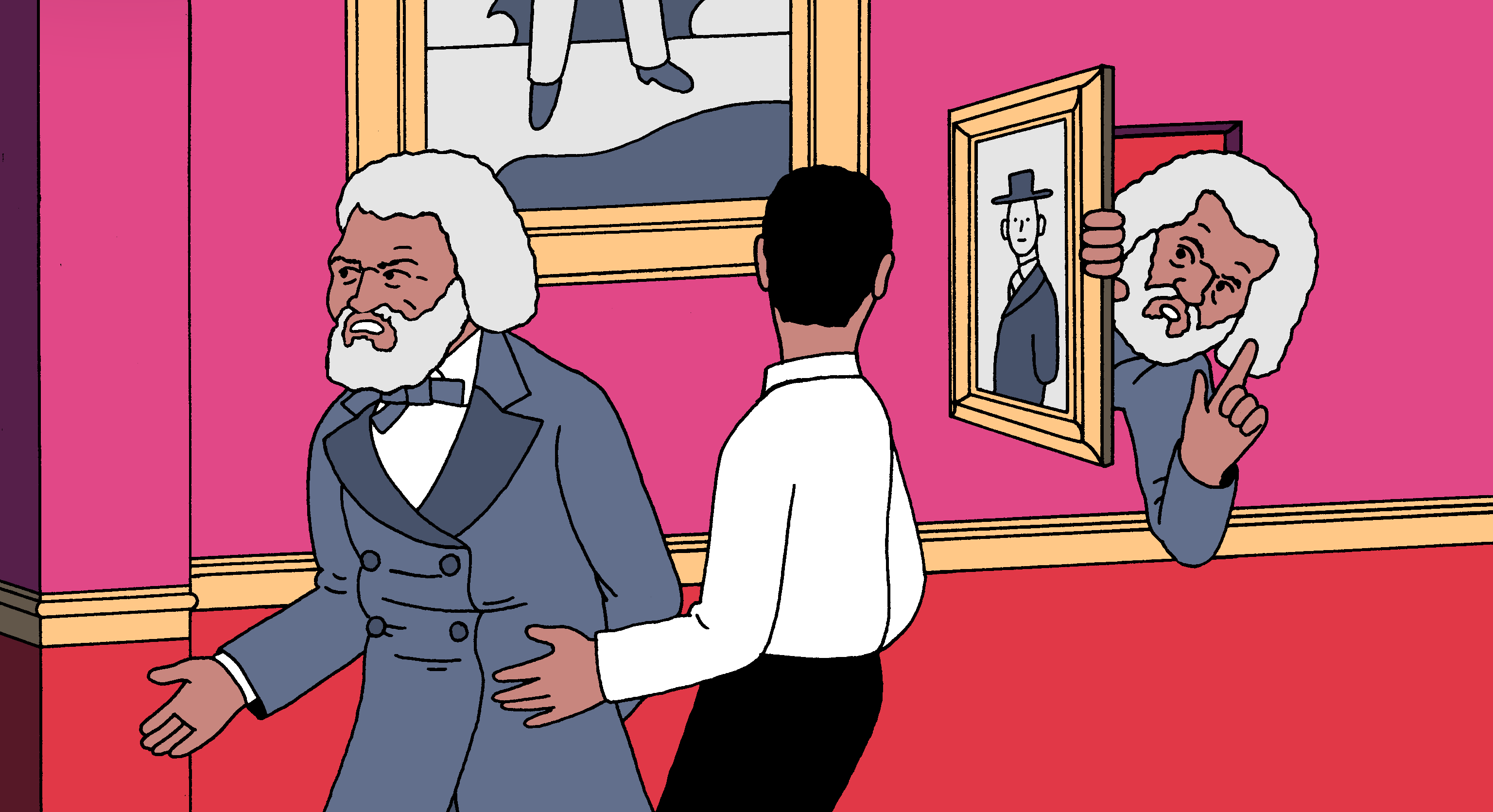In January of 2021, the Bureau of Labor Statistics issued its “The Employment Situation” report, and the results were not positive: the nation had shed 140,000 jobs during the preceding month.
Incredibly, all of these lost positions had been held by women. This fact was not lost on the media, with reports from CNN Business, CNBC, and Fortune all noting the 100 percent of losses in female-held jobs.
The news was disheartening, yet not surprising, as feminists had long anticipated a situation in which women were discarded during times of difficulty.
Claire Ewing-Nelson, of the National Women’s Law Center, explained the report: in December 2020, there was a net loss of 156,000 jobs for women while men had gained 16,000.
Right underneath the headlines, however, the numbers from the report demonstrated that the economic effects were not experienced evenly by all.
Ewing-Nelson went on to note that the overall rate of unemployment was concealing the disparities across gender lines.
With higher rates for Black women, Latinas, and other demographic groups, such as women with disabilities and young women aged twenty to twenty-four.
For instance, The Cut reported that the downturn in the economy had been “weighing heaviest on women of color” while CNN stated more bluntly: “Blacks and Latinas lost jobs in December, while White women made significant gains.”
Thus, the “women” highlighted in the headlines were not necessarily the same women that were losing out in the job market.
This made sense. This was also in line with generally accepted opinions on the struggles of “women” and “women of color” – assumed to be different levels.
Anything that happens to “women” is said to happen “especially”, “particularly”, “most” and “worst” in the presence of color – “of color”. Does the media’s portrayal of non-white women include them in the general picture? Or do they appear to be separate from it?
The female victims of job loss weren’t white, but the reports assume they must be; if women of color were the focus, it wouldn’t be necessary to make these remarks. Women of color are women, but one would assume there wouldn’t be a need to reiterate this so often.
Gender was not created to include everyone [2].
This is a typical example of a strategy that appears to be inclusive, but actually relegates the important details to a secondary position.
An article might take a moment to recognize the plight of those less fortunate, but then quickly move on to the main point, not really considering the significance of what it has just mentioned. In essence, the inclusion is really exclusion.
These brief acknowledgements come across as if the story should be told in the opposite way.
Audiences are enamored with an aside, but what is it that is so beloved? In the early episodes of Sex and the City, Carrie Bradshaw would often turn to the viewer and ask, “How the hell did we get into this mess?” while smoking a Marlboro Light and typing away.
This iconic triangle of keyboard, cigarette, and voice-over was mostly consistent throughout the series, however, after fifteen episodes it was no longer a regular occurrence.
Michael Patrick King, executive producer and director, thought that this direct manner of communication with the audience was not believable. He remarked, “I want to believe this. I believe her.
I think she’s the real thing. But whenever she turns to the camera, I no longer believe this. Can we stop that?”
The drama of an aside is not always so extreme as to break the fourth wall. But, they are uttered to be heard.
What is a stage whisper if it has no audience? Iago, the slick operator in Othello, does not keep his schemes secret from us, his viewers: “He takes her by the palm: ay, well said, whisper: with as little a web as this will I ensnare as great a fly as Cassio.
Ay, smile upon her, do; I will give thee in thine own courtship.” In Sex and the City , the voice-overs Carrie provided were meant to be the contents of her columns, but King suggested her asides to the camera were unbelievable.
This indicates something suspicious about an aside; while intended as a way of revealing something, it might be employed as a way of concealing information as well.
When discussing fiction (and nonfiction), one must note that asides are structured differently. Many critics will bring up the rhetorical devices of Nabokov, and as an example, a section in Lolita has a very notable duo of parentheses asides.
My mum, who had an aptitude to be photographed, was tragically taken away in an unexpected accident when I was 3. Except for a little corner of tenderness in my early memories, there is nothing left of her in my recollections.
If you can still bear with my writing (I’m writing while being watched) the sun of childhood has already set for me.
It is easy to be entranced by the ‘arresting off-handedness, the cadence, the sonic double-mirroring… the simplicity’ of the first parenthesis, according to writer Emily Temple, however, the effects of the second pair ought not be overlooked.
This pair is used as an “comment on the comment” which adds a layer of irony and, as a result, diminishes the apology for style. This style of utilizing an aside can also be seen in the novel White Teeth by Zadie Smith.
In Willesden, it is not uncommon to find Sita and Sharon, two close friends who are often mistaken for one another.
Sita has a white complexion, and was named by her mother, while Sharon is Pakistani and her name was chosen by her mother to avoid issues.
Smith’s asides are a tightly-balanced blend of intensity and moderation. With the opening parentheses, an informed reader is made aware of the cultural circumstances that have led to the emergence of a white girl with an Indian name.
The second set of parentheses contains an aside that is additionally demarcated by an em dash, a remark on a remark. Its succinctness, similar to “(picnic, lightning),” implies a subtler point of view. Its inclusion, though not necessary, is what increases the interest.
In Narrative of the Life of Frederick Douglass, an American Slave, Written by Himself , Douglass underscores the harsh reality of the plight of the slave through small asides. He is keenly aware of the pernicious mythology of benevolent slaveholders and writes:
After not long, I saw that Mr. Freeland was unlike Mr. Covey in a lot of ways. Even though he was a slaveholder, he seemed to have a certain level of regard for honor, justice, and basic human decency.
Mr. Freeland was dissimilar to Mr. Covey, the “nigger-breaker,” as he was considered an “educated southern gentleman” and only owned two slaves.
He was passionate and fretful, but he was not guilty of the same vices as Covey. However, both of them were, by definition, slaveholders. Consequently, a word of caution is made: “some regard,” “some reverence,” “some respect.”
A sharp contrast exists between Douglass’s first autobiography and his second– My Bondage and My Freedom , which was published in 1855–where an abundance of aside remarks can be found.
In some cases, these asides provide clarification or factual detail.
In other cases, as in White Teeth , they offer an opportunity to employ “black nonchalance” with a hint of sarcasm.
Such as: “(what slaveholders would call wicked)”; “(as the slaveholders regard it)”; “(as was sometimes said of him)”; “(she had then given me no reason to fear)”; “(I write from sound, and the sounds on Lloyd’s plantation are not very certain.)”
In her writing, Serpell states that black nonchalance “performs nonreaction”. This is due to the “double consciousness, double meanings, and double dealings” that are necessary to overcome racism and its potential violence.
Fittingly, this concept appears in My Bondage and My Freedom, which was written by Douglass a decade later than his initial memoir. Unlike the earlier book, this one allows him to discuss the prejudice of the North in addition to his political memoir.
As a result, the text allows for the author to be sly in his asides which conceal and disclose simultaneously. Consequently, Serpell claims that nonchalance does not fight the power but instead “loiters, hangs, leans, and brushes past”.
If a parenthetical can be considered a work of art, what about footnotes?
Digressions can be referred to as sub and text, but not subtext, much like an aside.
The novel Glyph by Percival Everett explores this concept through the story of Ralph, a baby of remarkable intelligence who reads and understands works of literature and theory as well as mundane works such as service manuals.
Despite this, he has no interest in speech. Footnotes are used regularly by Ralph to challenge the convention of keeping discursive notes to a minimum in peer-reviewed journals.
He quotes Thomas Moore, comments on the works of Derrida, and even speculates about those around him. At one point he laments his reluctance to throw a book in order to cause enough of a disruption to alert his parents to a potential kidnapping.
He then adds a footnote that reads “I say this even though one of the texts in my crib at the time was Harold Bloom’s A Map of Misreading “.
The formal academic world likely aims to discourage this sort of oblique speaking. Yet, these stray thoughts that pop into a writer’s head as they draft can be enlightening.
An advisor I had once suggested to me that I pay attention to the ideas that keep appearing in my work, and that of others.
It could be a form of art, a comment, or a subtle rebellion that doesn’t want to be detected; or it could be a message that needs to be expressed, a release from the mundane narrative that needs to be heard.
It has become popular to assert that new voices should be heard and diverse tales should be told, and under these unimaginative circumstances, the text and subbed text of media narratives are stretched.
Unaddressed whiteness will not be accepted, so someone must alter the painting. A pocket of text set aside for those more disadvantaged.
An article about loitering, for example, will take care to mention that Black and Brown people are frequently reprimanded by anti-loitering regulations, yet this mention fails to recognize that the Brown loitering is not an individual example but the standard.
The morals of the situation speak volumes. It’s “women and people of color.” It’s “women and femmes.”
Jules Gill-Peterson, in her essay on trans pessimism, questions the hazy “trans woman of color” whose life in writing is only a reinforcement for other things, a calling that represses whatever lives occur behind the information.
An aside to be disregarded. “The trans woman of color whose life is invoked is always hypothetical,” Gill-Peterson writes. “She’s not real. Who is she? How do you know her? I comprehend why Chase Bank or Sephora[,] feigns to know her. But you? What’s your reason?”
The ethical aside is a stop for reflection–a pause before everyone continues in their daily routine
. Journalists add “(X declined to comment for this article)” to make it known that all parties have been contacted; the ethical aside likewise implies that the author has taken the time to contemplate the conditions of those people who are not their primary concern.
It acknowledges that there are other people out there, even if the narrative being told does not include them.
However, an aside can be a wonderful place to reside. John Keene’s Counternarratives is full of experiments. One tale starts in 1754 with the birth of a slave called Zion.
Its title, “An Outtake from the Ideological Origins of the American Revolution,” alludes to a Pulitzer Prize-winning examination of the revolution published in the ’60s that, as Eric Slauter has pointed out, “is an unavoidable citation, whether it is superficial or substantial.”
According to its stated genre – the outtake – Keene’s story is set outside the parameters of the political papers which form the basis of the study’s canonized history.
Consequently, we have the life and other aspects of Zion, who continuously escapes and is re-captured by the nation’s slave system.
His unique rebellions illustrate the course of the 1700s, recorded in offenses arraigned by courts throughout the Massachusetts Bay Colony and counted in stolen bounties of rum, shillings, and mutton.
The narrator calmly recounts the facts of Zion’s life, like narrating the weather. It is no remarkable feat to note the date of Zion’s final capture, September 17, 1774, the only event noted that year.
From time to time, the story mentions something else – “great changes were blowing through streets of the colonial capital” – but it is a fleeting consideration, not deserving of much attention.
In this story, it is the characters of the other insurrection, the American Revolution, who are hushed and placed aside; what remains is Zion. There is space for more than one revolt, but the other will have to wait for now.
- The data in the report that was not adjusted for seasonal trends indicated that 156,000 non-farm jobs were lost.
- The household survey data indicated that the number of employed White women over the age of twenty increased in the month of December 2020, while the number of Black and Latina women decreased.
- Asian women and men were reported together.
- Scholars such as Harriet Jacobs (Incidents in the Life of a Slave Girl, 1861), Hortense J. Spillers (“Mama’s Baby, Papa’s Maybe: An American Grammar Book,” 1987).
- Kimberle Crenshaw (“Mapping the Margins: Intersectionality, Identity Politics, and Violence against Women of Color,” 1991), Saidiya Hartman (“Venus in Two Acts,” 2008).
- And C. Riley Snorton (Black on Both Sides: A Racial History of Trans Identity, 2017) have addressed these topics.
- An example of this is an early season two episode of Sex and the City, titled “The Freak Show,” in which Carrie watches her date discretely slip a paperback into his pants.
- The camera zooms in on her face, which expresses her trepidation.
- George Fitzhugh, in a chapter of Sociology for the South, or the Failure of Free Society.
- Released in the year prior to My Bondage and My Freedom”, mockingly remarks that “the ladies, all of whom love poetry, (though none of them can write it).”
- Endnotes are found at the back of books, and readers may or may not take the time to look them up.
- Writers may be apprehensive that someone with more followers will call out the fact that they have not mentioned a certain topic in their article.
Using a different structure, the same idea can be expressed as:
By altering the form of the text without changing its context or meaning, plagiarism can be avoided.
The utilization of technology in the classroom is becoming increasingly more prevalent in modern education.
More and more, teachers are turning to technological tools in their teaching, as the use of technology is proving to be a beneficial asset to both the students and the educators.
This widespread adoption of technology is creating a situation in which students are able to gain more information in quicker and more efficient ways than ever before.
It is possible to eliminate any potential for plagiarism by altering the structure of the text without altering its context or meaning. Keeping the markdown formatting intact is essential in order to maintain the original intent.








